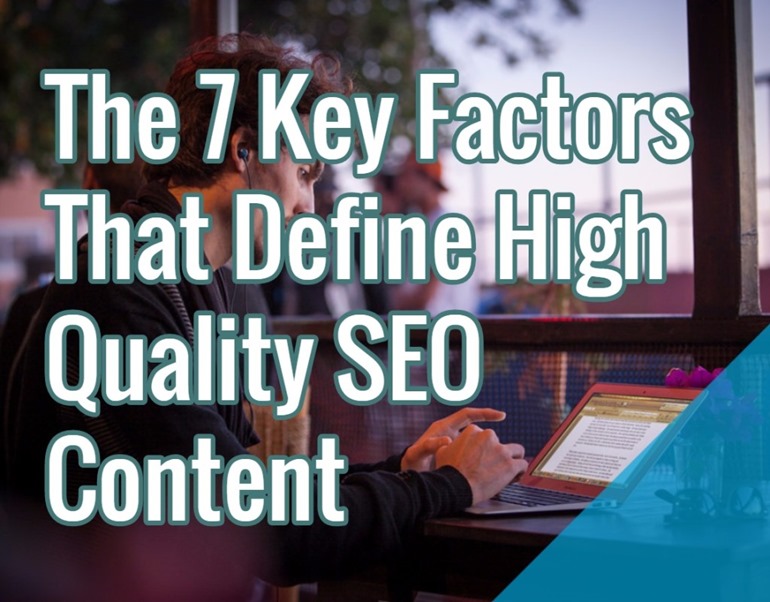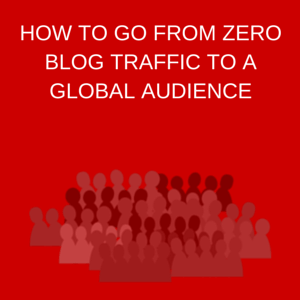
Google has rolled out dozens of updates over the years, from Penguin to Panda, and most recently its core ranking algorithm update. Each time, how the search engine giant ranked websites changed slightly.
However, since 2011, one thing has remained the same: Google has put a significant focus on quality content. We all know that quality content is a huge ranking factor, but what exactly does the term ‘quality content’ mean in an SEO sense?
It’s vitally important to understand what Google classifies as quality content and how you can adapt to ensure you’re creating this type of content. Fortunately, at the end of 2015, Google released its full Search Quality Rating Guidelines – something it had never done before – providing a detailed insight into how it rates the quality of a page.
In this article, we’ll take a look at the seven factors that define high quality SEO content, giving you the information you need to produce high quality content, Google-style.
Before We Begin: Understanding ‘Your Money Or Your Life’ Pages
Google places very strict standards on what it labels ‘Your Money or Your Life’ (YMYL) pages.
YMYL pages include e-commerce product pages, financial transactions, and medical and legal pages. In Google’s own words, YMYL pages are sites that have the ability to affect the “happiness, health or wealth of users”.
So, understand that if you own an e-commerce site or any of the aforementioned type of pages, your site will be scrutinized more harshly than others by Google’s quality raters – and yes, Google does indeed have quality raters.
You’ll need to take the extra step to show Google that your site is trustworthy, reputable, and authoritative enough to be ranked highly. Even if your site doesn’t include YMYL pages, you’ll still need to ensure that your content meets Google’s criteria.
With that disclaimer out of the way, let’s get down to the seven factors that Google uses to determine the quality of your content.
Factor #1: User Intent
Early in 2016, Google rolled out a core ranking algorithm update, rather than the Penguin update that was previously expected. This update caused considerable changes in rankings on a global scale.
A big change in Google’s ranking algorithm was the shift toward user intent – meaning that for Google to consider content to be high quality, it must fulfil what it thinks the user wanted from it.
This move has had quite a significant impact on what type of content ranks highly. For example, websites like BrainPOP – an interactive, educational game website with relatively little text – are ranked highly. The key is whether the user’s intent is being fulfilled; not how much text there is on the site.
The above makes it clear why it’s incredibly important to consider user intent when creating content. Ultimately you need to ask yourself – does your content fulfill the viewer’s needs, or does it leave them looking elsewhere?
Factor #2: Well Crafted Main Content
The quality of the [main content] is one of the most important considerations in Page Quality rating.
According to Google, the main content is the area of a webpage that achieves the purpose of the page. The main content can be text, of course, but it can also be videos, images, games or even user generated content, like reviews.
Whether your main content is a long article or a short video, Google considers content that takes time, effort and expertise to craft to be high quality.
It states in its guidelines: “For all types of webpages, creating high quality [main content] takes a significant amount of at least one of the following: time, effort, expertise, and talent/skill.”
Factor #3: Useful Supplementary Content
While your main content largely determines the quality rating of a page, supplementary content also plays a significant role. It its guidelines, Google encourages its raters look for useful supplementary content when determining a page’s quality.
According to Google, “Helpful [supplementary content] is content that is specifically targeted to the content and purpose of the page.”
Features that assist the user in finding what they want are considered supplementary content, according to Google. Such content should support your main content and provide additional value to the visitor, contribute to a better user experience, and encourage further exploration of the site.
An easy way to add some high quality supplementary content to your site is by linking to your own articles. If you run a blog, include a related articles section which links out to other articles on your site.
Factor #4: Page Layout
It’s not just how well written and valuable your content is to the reader and to Google that matters; it’s also how you present that content.
Nowadays, we all know that for a site to rank well it needs to include quality content, but design is just as important. However, there are still many poor page designs out there (and always will be).
Google states that in order for content to be considered high quality, the layout of the page must meet certain criteria:
- The user should not have to scroll down in order to see the main content of the page.
- Don’t include a lot of ads above the fold, as these push your main content lower down the page.
Ultimately, Google wants your main content to be front and center – immediately visible when a user opens the page.
Don’t think that a good page layout has to be pretty, either. According to Google’s Guidelines:
Some pages are “prettier” or more professional looking than others, but you should not rate based on how “nice” the page looks. A page can be very functional and achieve its purpose without being “pretty”.
Two great examples of this are IMDB and Craigslist. Both of these websites are not necessarily outstanding in terms of design aesthetic, but they are incredibly easy to use and navigate, and most importantly, the main content of each is presented front and center.
Factor #5: Ad Placement
Using ads on your website is fine and it won’t necessarily affect your quality rating with Google, but how you use them can. Google does not rate pages where the ads and the content are mixed together highly.
Essentially, there must be a clear separation between the advertising and the content, so that it’s possible for the reader to ignore them if they wish. According to Google’s guidelines, ads should be placed in a way that doesn’t distract from the main content of the page.
It must be clear which areas of the page are ads, and according to the guidelines that should be done through “explicit labeling or simply by page organization or design”.
Factor #6: Length Of Content
It’s not just the quality and the placement of your main content that will determine its quality score – it’s the length of that content too.
That said, in its guidelines, Google does not provide a recommended length for content. It simply states that in order for a page to be considered high quality, it must provide a satisfying amount of high quality main content. Google wants the length of content to fit the query in question.
According to its guidelines, Google expects its raters to use their judgement when determining whether or not the content is long enough for the purpose of the page:
The amount of content necessary for the page to be satisfying depends on the topic and purpose of the page.
This means that a high quality page on a broad topic – such as How to Drive Traffic to a Website – will need more content to be considered high quality compared to a page on a narrower topic – such as Using Retweets to Drive Traffic to a Website.
Ultimately, there is no one-size-fits-all length. So, how do you know whether the length of your content is satisfying to the user?
One effective method is to simply take a look at your top ranking competitors, using tools like WebSite Auditor, Screaming Frog, or A1 Website Analyzer, to name a few.
Factor #7: E-A-T
One of the main factors Google uses to define high quality SEO content is a high level of Expertise, Authoritativeness and Trustworthiness (E-A-T).
According to its guidelines, “High quality pages and websites need enough expertise to be authoritative and trustworthy on their topic.”
A high quality page should demonstrate to the reader that your content is authoritative, expert and trustworthy. This not only satisfies Google’s requirements for quality content, it also makes the visitor more likely to trust and share your information. E-A-T is a factor that you would ideally consider even if Google’s quality raters didn’t exist.
So, how can you demonstrate that your site has a high E-A-T value?
First of all, while Google does state that certain topics (such as medical and financial advice) should come from expert sources and accredited organizations, you don’t necessarily need a degree or to be an ‘expert’ for your content to have a high level of E-A-T.
For example, detailed user reviews, experiences shared on forums, and life experiences shared on blogs are considered to have a high E-A-T rating.
Google states that “We will value this “everyday expertise” and do not penalize the person/page/website for not having “formal” education or training in the field.”
With the above in mind, make sure that you keep all profiles, about pages, author bios, and any formal qualifications up to date and well-displayed on your website.
Conclusion
Quality content may be a vague term when it comes to SEO, but thanks to Google’s guidelines, we now have an insight into how this search engine defines quality content.
Let’s take one last look at those seven key factors that define high quality SEO content:
- User intent
- Well crafted main content
- Useful supplementary content
- Page layout
- Ad placement
- Length of content
- E-A-T
Now it’s over to you guys. Let us know what you think about Google’s guidelines in the comments section below!
Hand-Picked Related Articles:
- 9 Tips For Evaluating The Quality Of Your Site’s Content vs. A Competitor
- Google’s Manual Actions Guide (& How To Fix Them)
- How To Ensure You Consistently Produce High Quality Content
* Adapted lead image: ![]() Some rights reserved by eelke dekker
Some rights reserved by eelke dekker
The 7 Key Factors That Define High Quality SEO Conten
The post The 7 Key Factors That Define High Quality SEO Content appeared first on Search Engine People Blog.
Search Engine People Blog(90)






